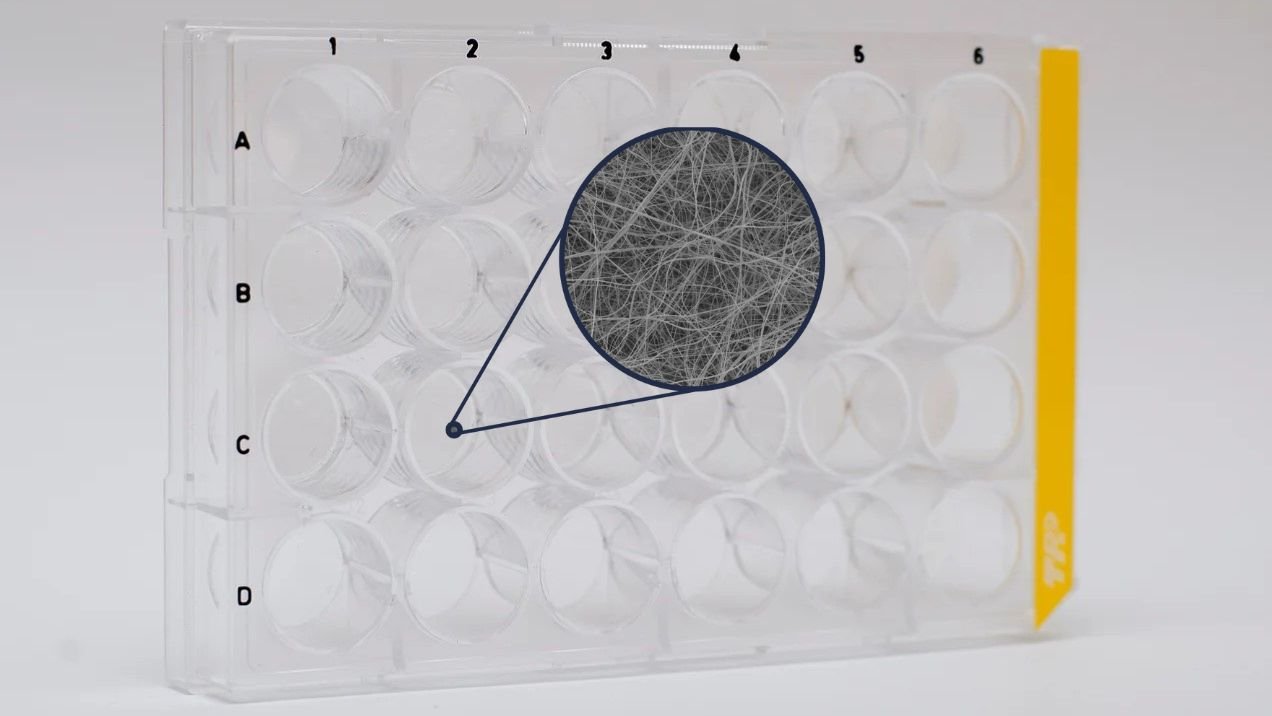This year Gelatex, a pioneering Estonian materials technology startup at the forefront of innovative biomaterials, launched Gelacell™ – a product line designed to revolutionize 3D cell culture and tissue engineering.
Gelacell™ introduces a non-woven, highly porous scaffold with a unique nanofibrous structure that closely mimics the natural extracellular matrix, fostering exceptional biocompatibility and non-toxicity across various cell types.
“Our Gelacell™ line represents a significant leap forward in the realm of in vitro cell culture and tissue engineering,” stated Märt-Erik Martens, CEO of Gelatex. “Its morphological advantages, including high surface-to-volume ratio, biomimicry, and enhanced cell interactions, open doors for diverse applications in biomedical research that were previously closed.”
Central to Gelacell™ is the novel halospinning technology, a patented high-throughput method that ensures cost-effectiveness and continuous production of nanofibers. This innovative solution-spinning method, described in the patent US 11,697,892, surpasses traditional electrospinning practices in speed and efficiency as well as helps provide a true 3D environment for the cells.
The launch preceded with rigorous in-house testing in the cell lab which Gelatex used to verify the potential of Gelacell™. Fibroblast and myoblast cells showcased uniform growth, exhibiting formations akin to in vivo tissue characteristics. The halospun nanofibrous scaffolds notably supported cell-to-cell and cell-to-scaffold interactions, fostering enhanced cell proliferation and differentiation.
The transition from traditional 2D in vitro systems to Gelacell™’s 3D scaffold heralds a paradigm shift in cell culture methodology. Unlike the flattening and stretching observed in 2D systems, the 3D scaffold preserves the natural shape of cells, reducing stress conditions and facilitating a structural conformation similar to native tissues. This preservation of cell functions, surface activity, and interactions opens doors to several potential applications:
- Cardiotoxicology: Gelacell™’s aligned scaffolds significantly improve structural and functional read-outs in cardiomyocytes, showcasing faster kinetics and enhanced performance compared to standard 2D culture plates.
- Toxicology Studies: Nanofiber scaffolds provide an ideal environment for Hep G2 liver cancer cells, serving as a model culture for in-vitro toxicology studies.
- Drug Discovery in 3D Tissue Models: Cancer cells cultured in 3D environments exhibit increased drug resistance compared to traditional 2D systems. Gelacell™’s nanofiber scaffolds have proven successful in various cancer cell models, aiding in more physiologically relevant drug screening.
- Stem cell research: facilitating the differentiation of neural stem cells into mature neurons within nanofiber scaffolds.
The launch of Gelacell™ underscores Gelatex’s commitment to advancing the landscape of cell culture and tissue engineering, offering researchers and scientists a transformative tool for a myriad of applications.

